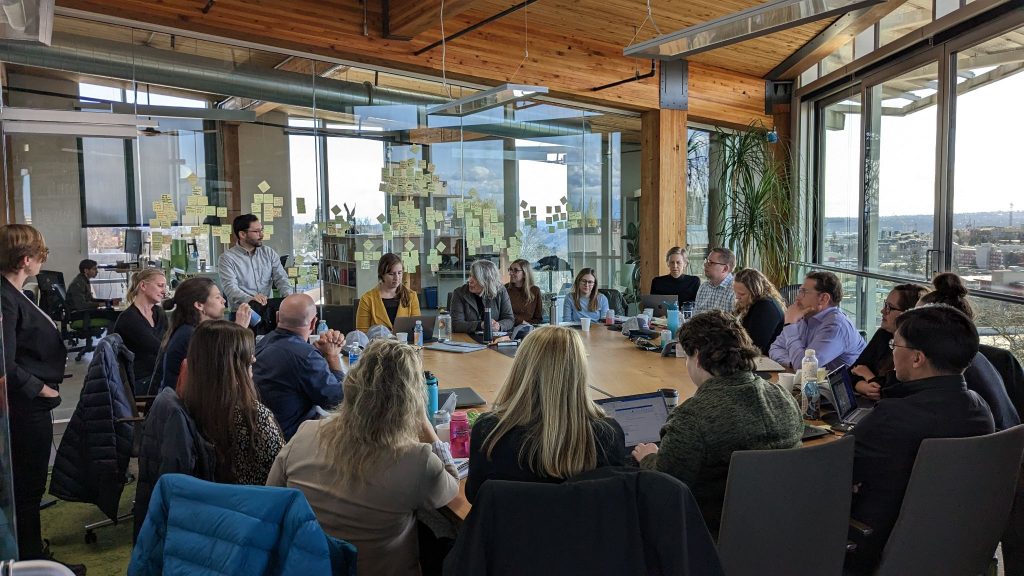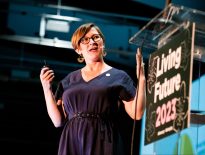Embodied Carbon Alignment: Moving Faster, Together!
After years of collaboration amongst various individual groups, built environment industry leaders came together for the first time at one table on March 14th, 2023, in Seattle, Washington, to discuss a potential coalition to accelerate and strategize how to reduce embodied carbon in the built environment rapidly. The group was composed of representatives from a set of NGOs and professional commitment groups who are engaged in gathering embodied carbon data from the built environment for professional carbon reduction commitment programs or certification systems, as well as other awareness and engagement activities.
The initial workshop and multiple subsequent meetings were convened by Architecture 2030, Building Transparency, the Carbon Leadership Forum, the International Living Future Institute, and the US Green Building Council. Others involved and committed to the alignment effort include: A&D Materials Pledge & 2030 Commitment (The American Institute of Architects), the Contractors Commitment, the Climate Positive Design Challenge, American Society of Landscape Architects, Infrastructure 2050 (American Society of Civil Engineers), the MEP 2040 Commitment, and the SE 2050 Commitment (Structural Engineering Institute of ASCE).

Since the first workshop in March, the group has met regularly to push forward various initiatives within the embodied carbon alignment effort, including schemas to streamline data and authoring a Minimum Project Embodied Carbon Reporting Guidelines which define terms, accounting, scope, and processes for measuring embodied carbon. This lift is now called the Embodied Carbon Harmonization and Optimization (ECHO) Project.
This group’s efforts and progress on the ECHO Project will be represented in panels at the following conferences:
- Greenbuild 2023 in Washington, DC
The Embodied Carbon Landscape: A Critical Juncture for Alignment
Wednesday, September 27, 2023 from 12:30pm – 1:30pm
- 2023 Decarbonization Conference for the Built Environment in Washington, DC
Open Carbon Collective Panel
Wednesday, October 25, 2023 from 1:40pm – 3:10pm
Public Statement from the ECHO Project:
“Reducing embodied carbon is recognized as a key action area for the built environment industries — including design, real estate, and construction — to address climate change. The need to address carbon emissions in the built environment has been propelled by a groundswell of action across industries including the recent Buy Clean components of the Federal Inflation Reduction Act. We are at a critical moment where reducing the carbon footprint of the built environment is possible today, but collaboration among industry leaders is necessary to enable a rapid market transformation toward regenerative carbon strategies in the coming years and decades.
“The group explored working together to streamline embodied carbon data collection and reporting, align on key terminology, build awareness around solutions that building materials can achieve, and speak together with a harmonized voice to accelerate progress. Together, this collaboration will accelerate the transition of the built environment towards positive environmental outcomes through design practices and material choices. As organizations currently or imminently gathering embodied carbon data from the built environment industry, creating tools and resources, and building awareness about this critical issue, we believe that we can move faster together. We will be meeting again in May 2023 to plan our collaboration.”


